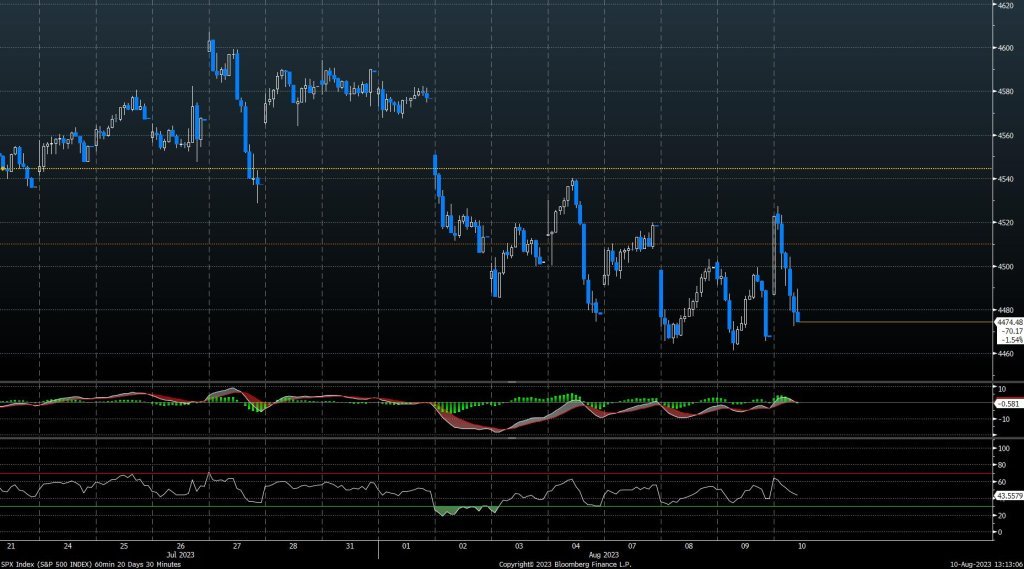-
Research
-
Latest Research
-
Latest VideosFSI Pro FSI Macro FSI Crypto
- Tom Lee, CFA AC
-
First WordFSI Pro FSI Macro
-
Intraday WordFSI Pro FSI Macro
-
Macro Minute VideoFSI Pro FSI Macro
-
OutlooksFSI Pro FSI Macro
- Mark L. Newton, CMT AC
-
Daily Technical StrategyFSI Pro FSI Macro
-
Live Technical Stock AnalysisFSI Pro FSI Macro
-
OutlooksFSI Pro FSI Macro
- L . Thomas Block
-
US PolicyFSI Pro FSI Macro
- Market Intelligence
-
Your Weekly RoadmapFSI Pro FSI Macro FSI Weekly
-
First to MarketFSI Pro FSI Macro
-
Signal From Noise
-
Earnings DailyFSI Pro FSI Macro FSI Weekly
-
Fed WatchFSI Pro FSI Macro
- Crypto Research
-
StrategyFSI Pro FSI Crypto
-
CommentsFSI Pro FSI Crypto
-
Funding FridaysFSI Pro FSI Crypto
-
Liquid VenturesFSI Pro FSI Crypto
-
Deep ResearchFSI Pro FSI Crypto
-
-
Webinars & More
- Webinars
-
Latest WebinarsFSI Pro FSI Macro FSI Crypto
-
Market OutlookFSI Pro FSI Macro FSI Crypto
-
Granny ShotsFSI Pro FSI Macro FSI Crypto
-
Technical StrategyFSI Pro FSI Macro FSI Crypto
-
CryptoFSI Pro FSI Macro FSI Crypto
-
Special GuestFSI Pro FSI Macro FSI Crypto
- Media Appearances
-
Latest Appearances
-
Tom Lee, CFA AC
-
Mark L. Newton, CMT AC
-
Sean Farrell AC
-
L . Thomas Block
-
⚡FlashInsights
-
Stock Lists
-
Latest Stock Lists
- Super and Sleeper Grannies
-
Stock ListFSI Pro FSI Macro
-
CommentaryFSI Pro FSI Macro
-
HistoricalFSI Pro FSI Macro
- SMID Granny Shots
-
Stock ListFSI Pro FSI Macro
-
PerformanceFSI Pro FSI Macro
-
CommentaryFSI Pro FSI Macro
-
HistoricalFSI Pro FSI Macro
- Upticks
-
IntroFSI Pro FSI Macro
-
Stock ListFSI Pro FSI Macro
-
PerformanceFSI Pro FSI Macro
-
CommentaryFSI Pro FSI Macro
-
FAQFSI Pro FSI Macro
- Sector Allocation
-
IntroFSI Pro FSI Macro
-
Current OutlookFSI Pro FSI Macro
-
Prior OutlooksFSI Pro FSI Macro
-
PerformanceFSI Pro FSI Macro
-
SectorFSI Pro FSI Macro
-
ToolsFSI Pro FSI Macro
-
FAQFSI Pro FSI Macro
-
-
Crypto Picks
-
Latest Crypto Picks
- Crypto Core Strategy
-
IntroFSI Pro FSI Crypto
-
StrategyFSI Pro FSI Crypto
-
PerformanceFSI Pro FSI Crypto
-
ReportsFSI Pro FSI Crypto
-
Historical ChangesFSI Pro FSI Crypto
-
ToolsFSI Pro FSI Crypto
- Crypto Liquid Ventures
-
IntroFSI Pro FSI Crypto
-
StrategyFSI Pro FSI Crypto
-
PerformanceFSI Pro FSI Crypto
-
ReportsFSI Pro FSI Crypto
-
-
Tools
-
FSI Community
-
FSI Snapshot
-
Market Insights
-
FSI Academy
-
Book Recommedations
- Community Activities
-
Intro
-
Community Questions
-
Community Contests
-
Part 2
What are Value Stocks?
In short, value stocks are companies that trade below their intrinsic value, increasing the potential magnitude of future returns as investors properly recognize their worth. They are commonly characterized as having a low price-to-earnings ratio and price-to-book ratio relative to the company’s industry or historical averages.
Value stocks are typically larger, well-established companies found in relatively dependable sectors such as consumer staples, energy, and financials. As these companies have already proven their ability to make profits with their established business model, they are considered lower risk investments. Often, a key factor to the appeal of value investments is their strong dividend yields, which can contribute to steady returns even if the stock price does not rise as much as expected.
The value index, for example, offers 2.1% in dividend yield, whereas the growth index has a measly 0.6% yield.
Value investors don’t believe in the “efficient market hypothesis,” which asserts that asset prices reflect all available information at any given time. Rather, they believe that the market is prone to psychological biases and human error. When good or bad news emerges in the markets, stocks are pushed up or down beyond what they are really worth. Thus, value investors believe that by focusing only on the intrinsic value of companies, they can capitalize on undervalued stocks and make profits in the long run.
Growth stocks, on the other hand, are shares of companies that investors believe hold promise because of their future potential. Because the market has widespread expectations of success, they’re frequently overvalued. They tend to be in sectors with high innovation and growth, such as tech and healthcare.
Unlike value stocks, growth investments are more volatile, as these businesses have yet to prove their long run success. If a growth company fails to meet the performance expectations of its investors, its price could plummet. Dividend yields are rare, as investors prefer that retained earnings get reinvested back into the company’s development.
But despite the many risks of growth equities, investors are continually drawn in by their overwhelming potential for growth.
Although the past decade has been dominated by growth stocks, many studies show that value investments beat growth in the long run. Value outperformed growth from 2000 to 2010 and has recorded numerous periods of outperformance going back to 1926.
The legendary value investor Warren Buffet once said, “Our favorite holding period is forever.” This long term mindset is key to value investing, looking past short-term performance for future returns.
While there may appear to be a stark divide between growth and value stocks, the distinction between the two is far from clear-cut. Investment style classification is becoming increasingly fluid, as investors recognize that many stock characteristics don’t allow for absolute style distinction. This idea was underscored in June 2025’s recent Russell Reconstitution, in which Russell value and growth indexes are reevaluated to maintain an accurate representation of the market. In a notable shift, companies including Amazon, Alphabet, and Meta—previously viewed as pure growth investments—are now classified as part growth, part value.
Furthermore, traditional metrics such as price-to-earnings ratio and price-to-book ratios don’t always capture the full picture. This holds especially true for companies whose primary assets are intangibles such as R&D, patents, and intellectual property. According to GAAP rules, these intangible assets are excluded from book value calculations—an enormous oversight in today’s increasingly information-based economy. A 2019 study found that according to traditional GAAP rules, value stocks hit their peak performance relative to growth in 2006. However, if book value was adjusted to include intangibles, value’s peak came in 2016—ten years later. This suggests that outdated accounting standards may have exaggerated the relatively poor performance of value stocks, signaling the importance of maintaining a more flexible definition of value.
Bill Nygren, chief investment officer at Harris Associates, provides a strong example of this evolved approach to value investing. In 2019, Nygren bought Alphabet for the Oakmark fund, viewing it as undervalued despite its characteristic growth traits. By recognizing the importance of intangibles and looking past rigid definitions of value, Nygren’s bet has proven highly successful.

Related Guides
-
 Series of 3~5 minutesLast updated2 months ago
Series of 3~5 minutesLast updated2 months agoKeep Calm and Carry on Investing
A guide to managing your emotions during market downturns.
-
 Series of 2~4 minutesLast updated2 months ago
Series of 2~4 minutesLast updated2 months agoFS Insight Decoded
An ad-hoc series that explains sayings frequently used by members of the FS Insight research team
-
 Series of 3~6 minutesLast updated5 months ago
Series of 3~6 minutesLast updated5 months agoYour Price Target Is Likely Going to be Wrong. Here’s Why You Should Set One Anyway.
Price Targets
-
 Series of 3~9 minutesLast updated1 year ago
Series of 3~9 minutesLast updated1 year agoTechnically Speaking – The FS Insight Primer on Technical Analysis
Three-part series on technical analysis
-
 Series of 4~10 minutesLast updated2 years ago
Series of 4~10 minutesLast updated2 years agoCommodities 100
An introduction to commodities for novice investors.




